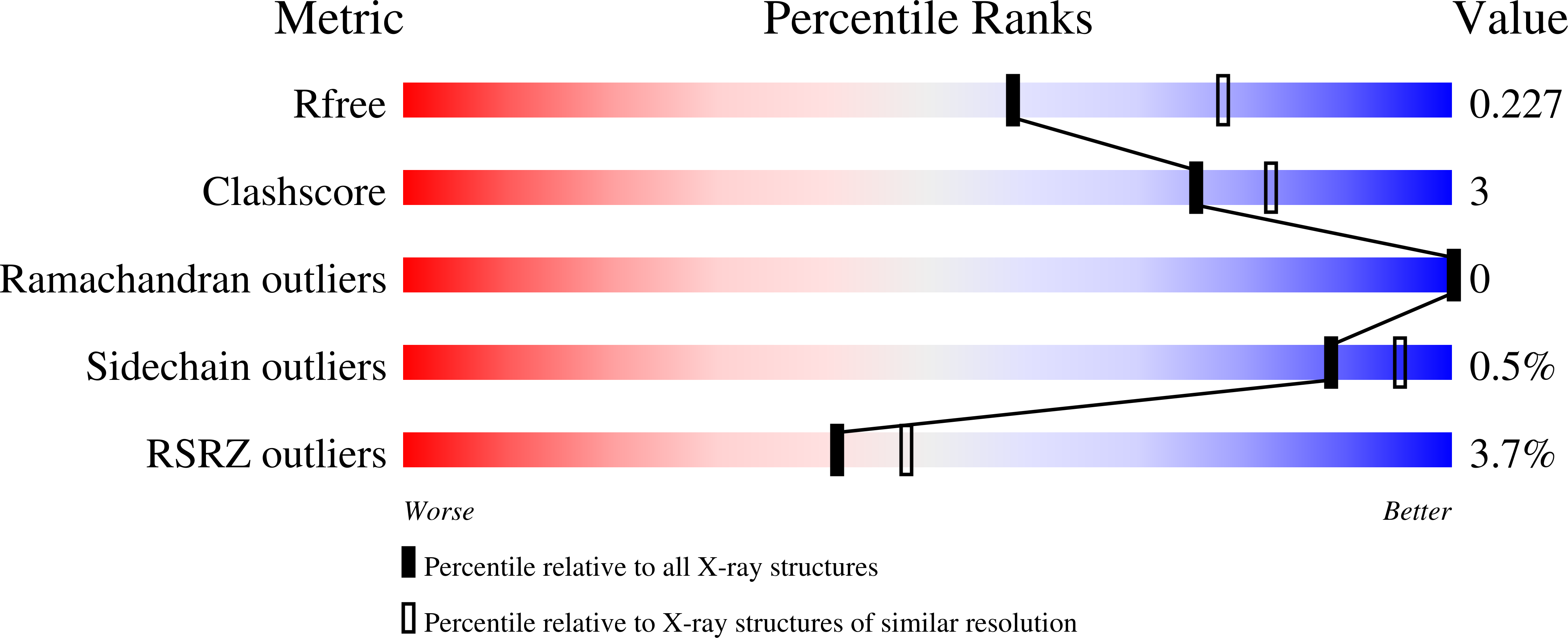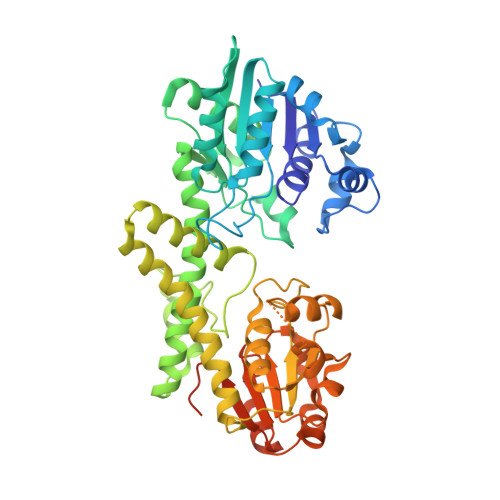Conformational flexibility in the allosteric regulation of human UDP-{alpha}-D-glucose 6-dehydrogenase.
Sennett, N.C., Kadirvelraj, R., Wood, Z.A.(2011) Biochemistry 50: 9651-9663
- PubMed: 21961565
- DOI: https://doi.org/10.1021/bi201381e
- Primary Citation of Related Structures:
3TF5 - PubMed Abstract:
UDP-α-D-xylose (UDX) acts as a feedback inhibitor of human UDP-α-D-glucose 6-dehydrogenase (hUGDH) by activating an unusual allosteric switch, the Thr131 loop. UDX binding induces the Thr131 loop to translate ~5 Å through the protein core, changing packing interactions and rotating a helix (α6(136-144)) to favor the formation of an inactive hexameric complex. But how does to conformational change occur given the steric packing constraints of the protein core? To answer this question, we deleted Val132 from the Thr131 loop to approximate an intermediate state in the allosteric transition. The 2.3 Å resolution crystal structure of the deletion construct (Δ132) reveals an open conformation that relaxes steric constraints and facilitates repacking of the protein core. Sedimentation velocity studies show that the open conformation stabilizes the Δ132 construct as a hexamer with point group symmetry 32, similar to that of the active complex. In contrast, the UDX-inhibited enzyme forms a lower-symmetry, horseshoe-shaped hexameric complex. We show that the Δ132 and UDX-inhibited structures have similar hexamer-building interfaces, suggesting that the hinge-bending motion represents a path for the allosteric transition between the different hexameric states. On the basis of (i) main chain flexibility and (ii) a model of the conformational change, we propose that hinge bending can occur as a concerted motion between adjacent subunits in the high-symmetry hexamer. We combine these results in a structurally detailed model for allosteric feedback inhibition and substrate--product exchange during the catalytic cycle.
Organizational Affiliation:
Department of Biochemistry and Molecular Biology, University of Georgia, Athens, Georgia 30602, United States.














